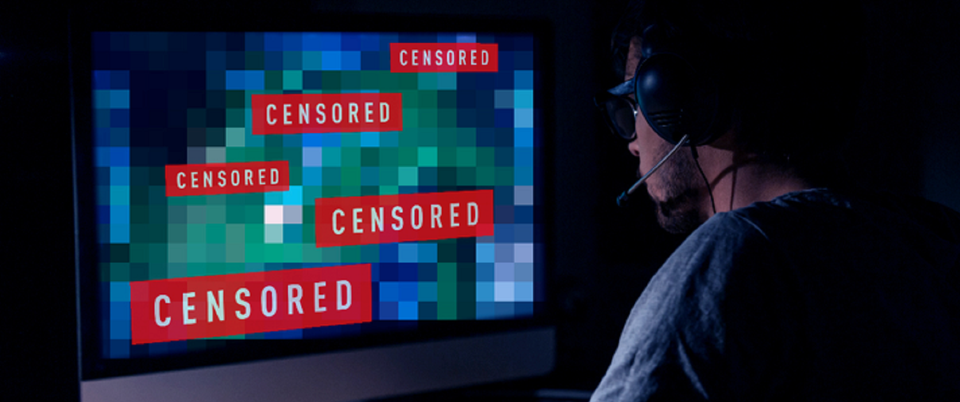Fixing Australia’s game rating system for the digital age

This article is part of a collaboration with iQ by Intel.
Australia is notorious for its strict approach to media bans and classification, coming down hard on videogames in particular. While the Australian Classification Board (ACB) has softened since the introduction of an R18+ adult rating in 2013, the list of banned games continues to grow. The more recent among them range from the hyper-violence of Hotline Miami 2: Wrong Number, to the juvenile humor of South Park: The Stick of Truth. Aside from bans, many criticized the classification process itself, seeing it as a long and costly burden on creators and ineffective at cautioning consumers.
As digital distribution became a widespread practice, the ACB found itself unable to review the increasing volume of games, which could total in the thousands every month. Beyond just lengthy waiting periods, creators found it difficult to accommodate the expensive fees, which could run as high as $5,000. Some designers even circumvented the law altogether, releasing unclassified games digitally. When Dennation Games’s Hotline Miami 2 was refused classification in 2015, lead designer Jonatan Söderström invited Australian fans to “just pirate it after release. No need to send us any money, just enjoy the game!”
But pushing creators to sell unregulated content online, where parents have limited control over their kids’ activities, forced the ACB to rethink its strategy. Classification systems are in place to inform parents and ensure age-appropriate consumers, and the system was failing. According to one parent who wishes to remain anonymous, their child—who is usually fine playing games aimed at more mature audiences—wasn’t prepared for the emotional weight of 2012’s story-driven The Walking Dead videogame. “We thought it was just another mindless zombie shooting game, he’s played those before. But The Walking Dead forced him to make decisions about killing normal people, even kids not far off his own age!”
{"@context":"http:\/\/schema.org\/","@id":"https:\/\/killscreen.com\/previously\/articles\/fixing-australias-game-rating-system-for-the-digital-age\/#arve-youtube-sx3v6kmuduu","type":"VideoObject","embedURL":"https:\/\/www.youtube-nocookie.com\/embed\/Sx3v6kmuDuU?feature=oembed&iv_load_policy=3&modestbranding=1&rel=0&autohide=1&playsinline=0&autoplay=0"}
A new system hopes to address the concerns of both creators and consumers, while also encouraging more in-depth content review. Created in partnership with the International Age Ratings Coalition (IARC), the tool allows studios to classify their own games by filling out a survey. After translating the creator’s responses into a corresponding classification, that’s it. No mess, no fuss: the game is released into the world. Importantly, self-classification also arms consumers with enough context to make an informed decision. “If you look at it purely from an information point of view, there’s a significant difference in the amount of information consumers [are being] armed with,” said Ron Curry, CEO of the Interactive Games and Entertainment Association (IGEA).
With most of the bureaucracy removed, Australian creators can release quickly and legally on the digital storefronts partnered with the IARC, like Google Play, Nintendo eShop, Windows Store, and Firefox Marketplace. “We really like the fact that we can submit ratings this way,” said Kamina Vincent of Tin Man Games, a Melbourne studio focused on interactive fiction.
Yet, almost a year into the pilot of this new system, many improvements remain to be seen. Namely, Vincent points to the need for partnerships with larger gaming platforms like Steam or Xbox Marketplace. She also notes that the IARC survey is less accommodating of games that don’t fit the usual mold. “Some of the questions are very much geared for games like [Grand Theft Auto], rather than a text based game. Questions regarding gore and the like are for a much more visual medium and so for those questions we tend to err on the side of caution.” Also, although the pilot solves digital distribution issues, boxed physical releases are still subject to the old system (at least for the time being.) According to Curry, this is due to “a high level of nervousness from states and churches in approving the legislation.”
a step forward for the Australian gaming community as a whole
But the tool’s successes are undeniable. Curry confirmed that in June 30 2015, before the pilot began, around 500 games had been classified by the ACB. Which pales in comparison to the 380,000 classified by the IARC tool in a mere six months. While the pilot is scheduled to end on June 30, Curry speculated that, due to its success, it only “makes sense to let [the new system] keep running for now.” In all likelihood, the Australian government’s stance on content with extreme violence, sex, and incentivized drug abuse will not change any time soon. In fact, increasing the rate of classification will only increase the amount of banned titles.
Ultimately, the new system does not change the rubric for classification, but instead improves the method. But the IARC tool promises to be a step forward for the Australian gaming community as a whole. By shedding some of its more archaic methods, the ACB is learning to serve creators and consumers in the notoriously unregulated world of online media. “Coming into this year we know that around 50% of content that’s sold is sold digitally, and we know that [number is only] going to increase,” said Curry. “Using IARC bypasses the question of ‘Do we need to classify all content?’ Because we just will. It’s that easy.”



